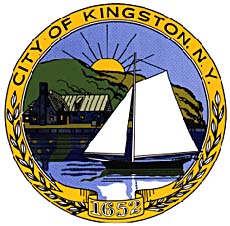
By Hillary Harvey
hillary@kingstoncitizens.org
The Historic Landmarks Preservation Commission (HLPC) recently chose to change its format to allow the public an opportunity to participate on applications in real time, creating a more democratic format for both the applicant and the public. The changes provide a model of a more participatory meeting format that all City of Kingston boards, committees and commissions might consider applying.
Currently, in the City of Kingston, the majority of committees and subcommittees offer public speaking at the discretion of the committee chair. It is possible to reach out to the chair ahead of a meeting to let him/her know that citizens would like time to present comments or questions.
During the April 6th HLPC meeting, it was decided that the meeting’s format would be updated. Now, at the beginning of each meeting, there is a public comment period where the public can address general comments to the Commission. On each agenda item, the applicant and the Commission discuss the application. Then, the Chair opens the agenda item up to public discussion where attending citizens have the opportunity to submit oral comments and questions. The floor is then closed to public discussion, and the applicant and Commission discuss the comments and questions raised by the public before the Commission deliberates and votes. VIEW @ minutes 6:33-32
In discussing what meeting format the HLPC should take, at minute 8:00 of the video, HLPC Vice Chair Marissa Marvelli said, “If it’s related to applications, I would rather that [the public] speak at the time that we’re reviewing the applications.” She said other boards take this approach.
Concerns were raised that it would open the board up to unwieldy debate around controversial agenda items. Marvelli suggested guidelines to this meeting format to help the board maintain control of the meetings.
At minute 10:16, Marvelli said, “The reason I say this is because if something is presented…which obviously happened here tonight where we presented something that wasn’t really spelled out on the application…it’s not fair that the public is speaking with insufficient information prior to what’s being presented.”
The Planning Board’s format was suggested as the ideal format, though we at KingstonCitizens.org do not agree. When an application is on the agenda for the Planning Board, the first thing that happens is a public hearing. The floor is opened up to public comment, where anyone may walk up to the podium to speak on the new business agenda item. The floor is then closed to public comment, and the applicant presents the project to the board.
This is generally the first opportunity for the public to learn about the application. The public is not allowed to ask any further questions or raise any further concerns at that meeting, but can do so at the following month’s meeting during the open speaking period at the beginning of the meeting. There are no more public hearings on the application unless the Planning Board decides to hold a special one.
There is a method of learning about a project prior to that initial public hearing at the Planning Board meeting, however. Citizens can go into the Planning Department office during regular business hours (making an appointment ahead of time is ideal), and look at the file for an application. Usually, questions can be asked of Planning staff in the office. In any application before the Planning Board which interests citizens, this is an ideal first step. A Freedom of Information Act (FOIL) form can be filled out, and the paperwork can be photographed with a smart phone or Planning Department staff will make photocopies for a small per page fee. Using that information, more informed questions and concerns can be raised at that first public hearing at the Planning Board meeting.
Recently, this was done on an application around a mixed-use development project slated for East Strand Street. Yet, it still felt to participants problematic and difficult to be fully engaged in the discussion when asking questions prior to hearing the applicants’ presentation. There is more explained in a presentation than one can glean from sifting through paperwork in a file. VIEW minute 52 and beginning of VIEW
What Happened?
At the April 6th Historic Landmarks Preservation Commission discussion on meeting format, objections to the new format idea centered around concerns for the applicant. At minute 30:30, the Chief Deputy said, “You have to allow time for the applicant to rebut whatever the public says. The applicant is the one before you, not the public.”
The meeting format proposed by Marvelli did pass, however. While there has been a learning curve as the Commission puts it into practice (sometimes the public comment period at the beginning of the meeting is forgotten; sometimes both citizens and applicants need to be reminded of the guidelines for that participation), it does function to promote a more informative and diplomatic discussion of project applications. This is evident in the July 13th meeting of the HLPC where after 54 minutes of presentation, and questions and comments from the board, an application discussion was opened up to the public for additional comments and questions. VIEW and VIEW
We’re grateful for the HLPC board members’ forward-thinking leadership on this.
Call to Action
Attend the August 4th meeting of the Historic Landmarks Preservation Commission to see this meeting format in action when the Irish Cultural Center comes back to present visibility studies for their proposed new building in the Rondout skyline. 6:30p at Kingston’s City Hall, 420 Broadway, Conference Room 1. Catch up on the ICC project HERE
—

Hillary Harvey is a photographer and writer, and a zoning code activist, working for transparency and responsible development that considers the welfare of residents and small businesses. Together with her neighbors, she runs Grow the R-T Responsibly VIEW, a neighborhood collective dedicated to that cause. A yogi and devoted traveler, she lives in an old house in Kingston’s historic Rondout district with her college sweetheart and their three muses.
